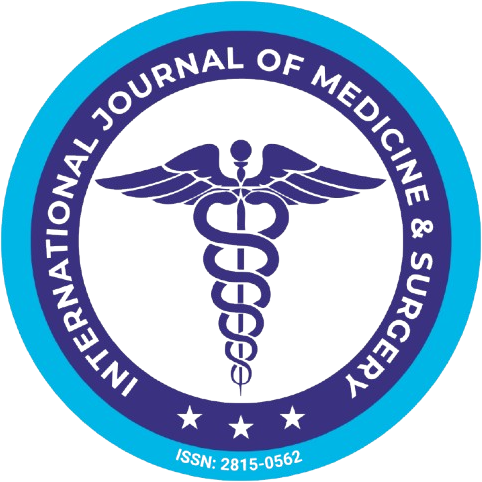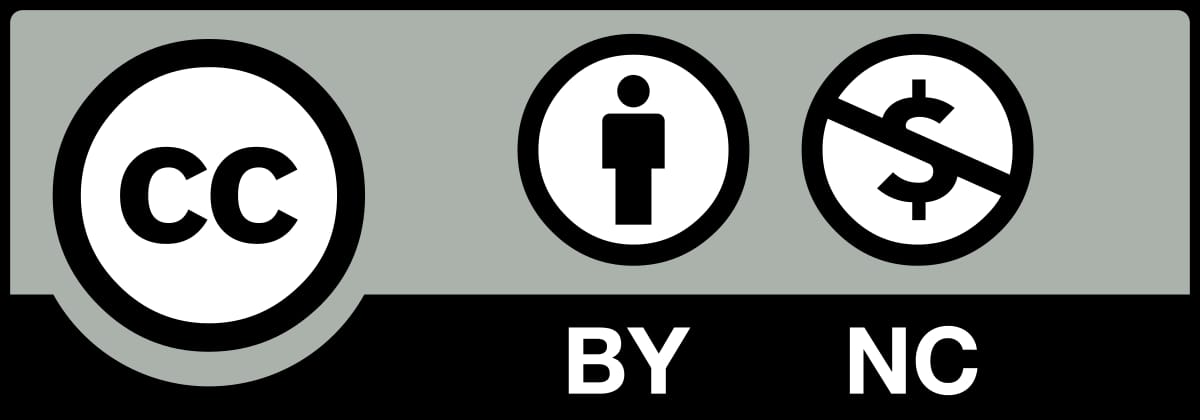Vol. 5, No. 1 (2025)
-
IMPLICATION OF MEAN PLATELET VOLUME AND PLATELET COUNT IN DENGUE PATIENTS
Dr. Kaviya Priyadarshni K, Dr. Shilpa T Patil, Dr. Janakiraman K, Dr. Anusha NAbstract
Background: Dengue fever (DF) is a viral infection endemic to many tropical regions, including Southeast Asia, and is characterized by a range of clinical manifestations, from mild febrile illness to severe dengue hemorrhagic fever (DHF). Thrombocytopenia is a common hallmark of dengue, with platelet count and mean platelet volume (MPV) being potential markers for disease prognosis. Objective: This study aims to evaluate the association between platelet count and MPV in dengue patients to assess their prognostic utility. Methods: A prospective study was conducted at Vinayaka Mission’s Medical College & Hospital, Karaikal, from July 2023 to September 2023, involving 60 confirmed dengue patients. Platelet count and MPV were measured using the Mindray BC 6000 hematology analyzer. Statistical analysis was performed using SPSS 23.0, with ANOVA and t-tests used to assess the significance of the association between platelet count and MPV, and p-values < 0.05 considered significant. Results: The study included 33 males and 27 females. 85% of cases shows the MPV values between 8-12 and 50% cases had platelet count between 50000-100000. A significant relation was found between MPV and platelet count indicating that as platelet count decreased, MPV increased. Conclusion: MPV and platelet count are inversely related in dengue patients. However, platelet count and MPV were not influenced by age. These results highlight the potential of MPV as a prognostic tool in dengue management. Further research is needed to explore its role in predicting disease severity.
Keywords
Dengue fever, Thrombocytopenia, Mean platelet volume, Platelet count, Prognosis,- PDF View and Download Full Article
-
ROLE OF VINCA ROSEA ALKALOIDS IN PEPTIC ULCER MANAGEMENT: MECHANISMS AND THERAPEUTIC POTENTIAL
Azharuddin, Supriya Singh, Neha Jain, Shailender Mishra, Prof. (Dr.) Ram DayalAbstract
Catharanthus Roseus, also known as Vinca rosea, is widely recognized for its considerable form of medicinal makes use of due to its numerous alkaloid makeup, which includes vincristine, vinblastine, and vindoline. Although it has long been praised for its anti-cancer and antidiabetic homes, new studies shows that it may have massive healing capability for the remedy of peptic ulcer illness (PUD). Helicobacter pylori contamination, NSAID use, and oxidative strain are the main reasons of peptic ulcers, which is probably characterised by the use of erosion of the gastrointestinal mucosa. Research into possibility, plant-primarily based therapeutics is being fueled thru troubles with modern pharmaceutical remedies, together with drug resistance, side outcomes, and recurrence. Vinca rosea alkaloids possess multifunctional therapeutic mechanisms, including pronounced antioxidant activity through free radical scavenging, modulation of prostaglandin synthesis that enhances mucus and bicarbonate secretion, and notable anti-inflammatory actions by suppressing pro-inflammatory cytokines such as TNF-α and IL-6 via NF-κB inhibition. Additionally, indirect anti-H. pylori immunomodulatory effects and cytoprotective abilities further underline their potential in ulcer management. Experimental evidence highlights reductions in oxidative markers like malondialdehyde (MDA) and enhancement of endogenous antioxidants such as superoxide dismutase (SOD) and glutathione peroxidase (GPx). Furthermore, enhanced mucosal regeneration through increased collagen deposition, epithelial proliferation, and angiogenesis positions Vinca alkaloids as promising adjunctive therapies. However, the clinical translation faces obstacles including insufficient human trials, standardization of dosage, and possible toxicity concerns. Further research emphasizing controlled clinical studies, nano-formulations for improved bioavailability, and detailed toxicological assessments is crucial to establish Catharanthus Roseus alkaloids firmly within therapeutic protocols for peptic ulcer management.
Keywords
Catharanthus Roseus, Vinca alkaloids, Peptic ulcer, Antioxidant, Mucosal protection, Prostaglandins, Vincristine,- pdf View and Download Full Article
-
OBSERVATIONAL STUDY ON ANTIBIOTICS VS NO ANTIBIOTICS IN CASES OF LAPAROSCOPIC CHOLECYSTECTOMY IN A TERTIARY CARE HOSPITAL IN WEST BENGAL
Dr. Saurav Majumdar, Dr. Akshita KhareAbstract
Introduction: To treat gallbladder disorders, including symptomatic cholelithiasis, laparoscopic cholecystectomy is a common surgical treatment. Antibiotic prophylaxis should be considered since, despite the procedure's less invasive nature, worries about postoperative infections continue. Aims: The goals of this study are (1) to determine whether or not antibiotic prophylaxis is necessary for elective laparoscopic cholecystectomy and (2) to compare the rates of surgical site infections across patient groups. Materials and method: An institute-based prospective observational comparative research was the nature of the current investigation. From June 2022 to June 2023, in a medical college and teaching hospital in Kolkata carried out the study. This research comprised a total of 200 patients. Result: Only 8(4%) patients out of 200 had stone leakage, while 10(5%) patients had bile spillages. A p-value of 0.470, obtained from a Chi-square test, indicated that the two groups were similar and were, therefore, not statistically significant. Conclusion: To sum up, this observational research sheds light on the function of antibiotics in avoiding postoperative infections by comparing the use of antibiotics with no antibiotics in patients having laparoscopic cholecystectomy in a tertiary care hospital in West Bengal. Antibiotics may lower infection risk in certain situations, but the results imply that they may not be required for all patients, especially those without risk factors, to take them regularly. As a result, antibiotic stewardship is crucial for lowering healthcare costs and preventing antibiotic resistance. To validate these findings and inform therapeutic practice, more randomized controlled studies are suggested.
Keywords
Laparoscopic Cholecystectomy, SSI, Antibiotics, Biliary, Surgery,- pdf View and Download Full Article
-
IMPACT OF VIRTUAL BASED REHABILITATION ON FUNCTIONAL RECOVERY IN STROKE SURVIVOR: A SYSTEMATIC REVIEW
Dr. Muhammad Mazhar, Dr. Zahoor Ahmad, Dr. Pratik ThakreAbstract
Stroke remains a major global cause of both death and disability, sometimes with significant impact on lives of persons who survive, and typically presents with physical, cognitive challenges. In general, rehabilitation of stroke patients has primarily been aimed at recovering motor functions in order to improve physical functioning. Nevertheless, a new alternative has popped up: virtual reality based rehabilitation (VRBR). One of whom makes an interesting distinction between VRBR’s ability to engage users in a fun but also functionally beneficial way, especially with regard to motor skills, but also cognitive functioning. The benefits of VRBR on the physical and cognitive recovery of stroke patients are more comprehensive and inclusive when compared to its current conventional practice, and it is ideal for providing not only a faster recovery but also for the recovery of stroke patients.A systematic review of randomized controlled trials (RCTs) from 2010 to 2022, which examine the effects of VRBR on the functional recovery of stroke patients. Specifically, it explores how VRBR affects motor skills as well as cognitive functions, which are common deficits after a stroke. It is the review that goes to evaluate the effectiveness of VRBR as an innovative therapeutic option and comparing it with conventional methods. The results that are analyzed in this review of RCTs may help provide insight into the effect that VRBR has in improving overall recovery of stroke patients. The paper emphasizes the expanding application of VRBR to improve both physical and cognitive issues stroke survivors endure and the potential opportunity of it to be the light at the end of the tunnel for survivors in traditional therapy.
Keywords
Motor function, Virtual rehabilitation, Cognitive function, Stroke,- pdf View and Download Full Article
-
CATHARANTHUS ROSEUS: TRADITIONAL USES, PHYTOCHEMISTRY, AND MODERN PHARMACOLOGY
Ms. Neha Jain, Mr. Aashish Kumar, Ms. Nidhi Singh, Mr. Dhiraj Kumar, Prof. (Dr.) Ram Dayal, Ms. Supriya Singh, Prof. (Dr.) Anita SinghAbstract
In Madagascar periwinkle or Catharanthus roseus is one of the well-liked medicinal plants found to be prestigiously valued owing to its high phytochemical content and broad spectrum of pharmacological activities. It has been utilized in traditional medicine to treat diseases such as diabetes,hypertension, and infections for centuries. The plant is a cache of bioactive compounds such as alkaloids, flavonoids, and terpenoids, with vincristine and vinblastine being its most valuable secondary metabolites. These alkaloids have also been well known to contain extremely strong anticancer activities and are most widely applied in chemotherapy of leukaemia and other cancers.Phytochemical research has confirmed that C. roseus possesses antioxidant, antimicrobial, anti-inflammatory, and hypoglycemic activities, which are accountable For its medicinal applications. Recent pharmacological investigations have also continued to support its potential use in drug development, particularly in the treatment of cancer and diabetes. Its bioactive components have been examined for its molecular targets, which include inducing apoptosis, inhibition of angiogenesis, and glycaemic control. Although it is of great medicinal importance, its large-scale pharmacological utilization is limited by issues such as poor yield of alkaloids and issues of sustainability. New developments in plant biotechnology, genetic engineering, and tissue culture methods have been investigated to increase its metabolite yield. This review emphasizes the traditional importance, phytochemical diversity, and recent pharmacological developments concerning Catharanthus roseus, pointing towards its value in herbal medicine and drug development.
Keywords
Catharanthus roseus, Medicinal plant, Phytochemicals, Anticancer, Vincristine, Pharmacology,- pdf View and Download Full Article
-
A COMPARATIVE STUDY ON THE EFFECT OF INTRASULCULAR VERSUS PARAMARGINAL INCISION DESIGN ON INTERPROXIMAL BONE LOSS OF TEETH ADJACENT TO SINGLE IMPLANTS
Dr. Harish Kumar. A, Dr. Bareera Mariam. A, Dr. Supriya BhandageAbstract
Dental implants represent a contemporary and reliable method for replacing lost teeth, providing patients with both functional restoration and improved aesthetics. The long-term success of these implants is largely determined by the condition of the marginal bone that surrounds them. Consequently, strategies focused on maintaining the integrity of the crestal bone and minimizing its resorption are essential for ensuring the stability and durability of dental implants. Aims: The objective of this research is to radiographically compare and assess the influence of two incision techniques—intrasulcular and paramarginal—on the condition of marginal bone surrounding single dental implants. Materials and Methods: “The comparative clinical study was carried out in the Department of Oral and Maxillofacial Surgery at Oxford Dental College, Bangalore, following approval from the Institutional Ethics Committee.” A total of twenty-four patients who required prosthetic rehabilitation for a single missing tooth were included in this investigation. The participants were randomly divided into two equal groups. In Group A, dental implants were placed using the intrasulcular incision method, whereas in Group B, the paramarginal incision technique was applied. “Radiovisiography (RVG) was employed to evaluate and monitor the marginal bone levels surrounding the dental implants.” Both clinical and radiographic evaluations were performed at three time points: baseline, three months post-loading, and six months post-loading, in order to compare treatment outcomes between the two groups. Statistical analysis: "Data analysis was carried out using either the Independent Student’s t-test or the Mann–Whitney U test, with statistical significance determined at a threshold of P < 0.05." RESULTS: Marginal bone loss was evaluated in both groups at baseline, 3 months, and 6 months following loading. Across all time intervals, Group A demonstrated slightly greater mean bone loss compared to Group B. Nonetheless, the magnitude of these differences remained minimal, with p-values ranging between 0.50 and 0.75. This indicates that no statistically significant variation in bone loss was observed between the two groups throughout the study period. CONCLUSION: The investigation assessed marginal bone loss following Intrasulcular and Paramarginal incision approaches at different time intervals. Both techniques revealed progressive bone reduction, with early fluctuations more noticeable in the Intrasulcular group. Although the Intrasulcular approach showed slightly more pronounced bone alterations, the variation between the two incision techniques was not statistically meaningful. Overall, both methods were found to be equally effective in maintaining long-term marginal bone stability.
Keywords
Single implants, Intrasulcular incision, Paramarginal incision, Marginal bone loss,- PDF View and Download Full Article










 IJMSCI is a Peer-Reviewed Journal and valid as per New UGC Gazette regulations
IJMSCI is a Peer-Reviewed Journal and valid as per New UGC Gazette regulations








